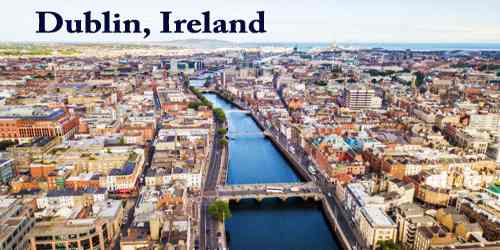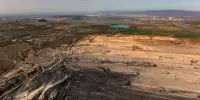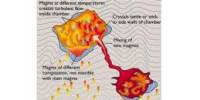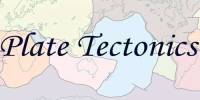Dublin (/ˈdʌblɪn/, locally /ˈdʊb-/; Irish: Baile Átha Cliath (ˈbˠalʲə aːhə ˈclʲiə; ˌbʲlʲaː ˈclʲiə)) city, capital of Ireland, located on the east coast in the province of Leinster. Situated at the head of Dublin Bay of the Irish Sea, Dublin is the country’s chief port, the centre of financial and commercial power, and the seat of culture. It is also a city of contrasts, maintaining an uneasy relationship between reminders of earlier political and economic conditions and symbols of present-day life and prosperity. Area city, 45.5 square miles (118 square km).
It is bordered on the south by the Dublin Mountains, a part of the Wicklow Mountains range. It has an urban area population of 1,173,179, while the population of the Dublin Region (formerly County Dublin) as of 2016 was 1,347,359. The population of the Greater Dublin Area was 1,904,806 per the 2016 census.
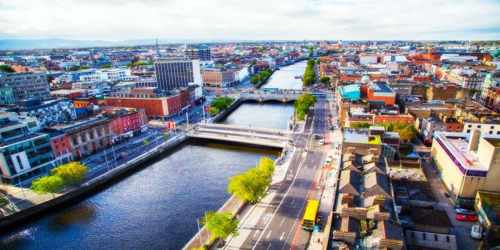
Dublin has been in the news since the 9th century, and while traces of its Viking past have been largely washed away, the city is a living museum of its history since then, with medieval castles and cathedrals on display alongside the architectural splendors of its 18th-century heyday, when Dublin was the most handsome Georgian city of the British Empire and a fine reflection of the aspirations of its most privileged citizens. How power was wrested from their hands is another story, and visitors will learn that one in its museums and on its walking tours.
The main historic attractions are definitely the 13th century Dublin Castle and St. Patrick’s Cathedral that was founded in 1191, but visitors will find many other castles, buildings, and streets that ooze with history from the Viking, Victorian, Georgian, and medieval eras.
There is archaeological debate regarding precisely where Dublin was established by the Gaels in or before the 7th century AD. Later expanded as a Viking settlement, the Kingdom of Dublin, the city became Ireland’s principal settlement following the Norman invasion. The city expanded rapidly from the 17th century and was briefly the second largest city in the British Empire before the Acts of Union in 1800. Following the partition of Ireland in 1922, Dublin became the capital of the Irish Free State, later renamed Ireland.
Dublin is a historical and contemporary centre for education, the arts, administration and industry. As of 2018 the city was listed by the Globalization and World Cities Research Network (GaWC) as a global city, with a ranking of “Alpha”, which places it amongst the top thirty cities in the world.
Dublin is a warm and welcoming city, known for the friendliness of its people and famous for its craic (“crack”) that mixture of repartee, humor, intelligence, and acerbic and deflating insight that has attracted writers, intellectuals, and visitors for centuries. It has faded grandeur and a comfortably worn sense. Some one-fourth of the residents of the Republic of Ireland live in the Greater Dublin urban area, providing a good deal of bustle. The city’s heart is divided north-south by the River Liffey, with O’Connell’s Bridge connecting the two parts. Pubs (where much of the city’s social life is conducted), cafés, and restaurants abound, and Irish musicality rarely allows silence. On the north side, near the General Post Office, stand most of the remaining Georgian houses, built in the 18th century around squares, now side by side with glass and concrete offices and apartment blocks. Some of the finest monumental buildings stand on the north riverbank, as do the city’s poorest parts, maintaining a curious juxtaposition between the echoes of the politics and economic life of the past aristocratic and impoverished and the manifestations of the prosperous city of the present.
Ireland’s national theatre, the Abbey, is just east of O’Connell Street, marked since 2002 by the Spire of Dublin, a 394-foot (120-meter) stainless steel landmark that proclaimed the street’s transformation with a pedestrian plaza and tree-lined boulevard. Together with a rash of new high-rise buildings, the spire has changed the character of the city and of the north side. Though Dublin has undergone modernization, and some areas such as the narrow and winding streets of the Temple Bar district west of Trinity College regularly play host to rowdy and raucous crowds, a strong sense of history and of a centuries-old capital pervades.
Dublin was founded by the Vikings. They founded a new town on the south bank of the Liffey in 841. It was called Dubh Linn, which means black pool. The new town of Dublin was fortified with a ditch and an earth rampart with a wooden palisade on top. In the late 11th stone walls were built around Dublin. The Danes also erected an artificial hill where the men of Dublin met to make laws and discuss policy.

In Viking Dublin living conditions were primitive. The houses were wooden huts with thatched roofs. None of them had chimneys or glass windows. In Dublin, there were craftsmen like blacksmiths and carpenters, jewelers and leather workers. Other craftsmen made things like combs from bone or deer antlers. There was also a wool weaving industry. In Dublin, there was also a slave trade.
The Danes were slowly converted to Christianity and the first Bishop of Dublin was appointed in 1028. In his time the first Christchurch Cathedral was built. In the wars between Irishmen and Vikings, the little town of Dublin was sacked several times. Yet each time it recovered. Dublin soon grew to be the largest and most important town in Ireland. It may have had a population of 4,000 in the 11th century. That seems very small to us but it was a large town by the standards of the time when settlements were very small. By the late 11th century there was a suburb of Dublin north of the Liffey. In those days the people of Dublin traded with the English towns of Chester and Bristol.
1169 marked the beginning of 700 years of Norman rule. The King of Leinster, Mac Murrough, enlisted the help of Strongbow, the Earl of Pembroke, to conquer Dublin. After Mac Murrough’s death, Strongbow declared himself King of Leinster, defeating both the Vikings and the High King of Ireland to win control of the city. However, the king of England, afraid Strongbow might become too powerful, pronounced himself Lord of Ireland and gave Dublin to the merchants of Bristol.
Dublin was devastated by fire in 1190 and a stone fortress built sometime in the 13th century. The first mayor was appointed in 1220. Following this, the city grew fast and had a population of 8,000 by the end of the 13th century, prospering as a trade center, despite an attack by the Scots in 1317.
From the 14th to 18th centuries, Dublin was incorporated into the English Crown as The Pale and, for a time, became the second city of the British Empire. In 1537, a revolt occurred when the Lord Deputy of Ireland was executed in London. His son renounced English sovereignty and set about gathering an army to attack Dublin. However, he was defeated and subsequently executed. Dublin continued to prosper in the 16th Century and boasts one of the oldest universities in the British isles, Trinity College, which was founded by Queen Elizabeth I. The city had a population of 20,000 in 1640 before plague in 1650 wiped out almost half of the inhabitants. But the city prospered again soon after as a result of the wool and linen trade with England, reaching a population of 60,000 in 1700.
In 1801 the Act of Union between England and Ireland abolished the Irish Parliament and drastically reduced Dublin’s status. With no governmental duties to compel their presence in Dublin, the leading figures of the Ascendancy returned to England. The city fell into a decline from which it did not recover until 150 years later. Dispossessed peasants crowded into the Georgian houses that owners rented piecemeal, which reduced these once elegant structures to slums. Anyone who owed more than 10 shillings could be imprisoned, and, until the legislation was revised in 1864, Dublin’s jails overflowed with debtors.
The Easter Rising of 1916, the Irish War of Independence, and the subsequent Irish Civil War resulted in a significant amount of physical destruction in central Dublin. The Government of the Irish Free State rebuilt the city center and located the new parliament, the Oireachtas, in Leinster House. Since the beginning of Norman rule in the 12th century, the city has functioned as the capital in varying geopolitical entities: Lordship of Ireland (1171–1541), Kingdom of Ireland (1541–1800), as part of the United Kingdom of Great Britain and Ireland (1801–1922), and the Irish Republic (1919–1922). Following the partition of Ireland in 1922, it became the capital of the Irish Free State (1922–1937) and now is the capital of Ireland. One of the memorials to commemorate that time is the Garden of Remembrance.
Since the mid-1990s, an economic boom christened the ‘Celtic Tiger’ brought massive expansion and development to the city, including the creation of Dublin’s newest landmark, the Spire monument on O’Connel Street. Fuelled by the boom years, Dublin has grown to be the single largest conurbation in Ireland. Some 1.2m people live in the greater Dublin area that equals 28% of the country’s total population of 4.2m. The boom brought many new ethnic groups into the city and created a more international feel, particularly in the north inner city. Ireland has fallen on harder times in recent months, but Dublin is, if anything, more vibrant than ever.
Similar to much of the rest of northwestern Europe, Dublin experiences a maritime climate (Cfb) with mild-warm summers, cool winters, and a lack of temperature extremes. The average maximum January temperature is 8.8 °C (48 °F), while the average maximum July temperature is 20.2 °C (68 °F). On average, the sunniest months are May and June, while the wettest month is October with 76 mm (3 in) of rain, and the driest month is February with 46 mm (2 in). Rainfall is evenly distributed throughout the year.
Dublin’s early private speculators had a sense of order and beauty as acute as their sense of profit. The city’s streets were broad and its garden squares spacious. For their time (the 18th century), the houses were ultramodern elegant yet simple Georgian and Neoclassical structures designed in the manner of the great English architects Inigo Jones and Sir Christopher Wren. The sweeps of red-brick houses, ranged in squares and long terraces and built with well-proportioned windows, made a harmonious whole that still stands as a happy achievement of urban architecture.
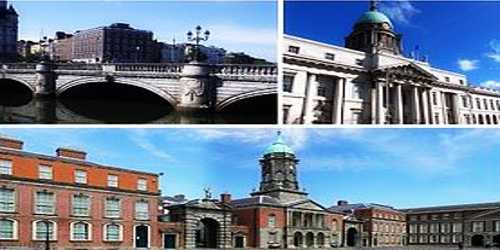
In the southern half of the town, between Trinity College and St. Stephen’s Green, Joshua Dawson, one of Dublin’s leading citizens, built an impressive house that was completed in 1710. The city soon bought the house to serve as the residence of the lord mayor, and, as the Mansion House, it still does.
There are many green-spaces around the city, and Dublin City Council manages over 1,500 hectares (3,700 acres) of parks. Public parks include the Phoenix Park, Herbert Park, St Stephen’s Green, Saint Anne’s Park, and Bull Island. The Phoenix Park is about 3 km (2 miles) west of the city center, north of the River Liffey. Its 16-kilometer (10 mi) perimeter wall encloses 707 hectares (1,750 acres), making it one of the largest walled city parks in Europe. It includes large areas of grassland and tree-lined avenues, and since the 17th century has been home to a herd of wild fallow deer. The residence of the President of Ireland (Áras an Uachtaráin), which was built in 1751, is located in the park. The park is also home to Dublin Zoo, Ashtown Castle, and the official residence of the United States Ambassador. Music concerts are also sometimes held in the park.
Dublin’s major traditional industries brewing (the Guinness Brewery has operated at St. James’s Gate since 1759), distilling, food processing, and textile manufacturing have all declined since the 1970s, resulting in inner-city blight. The recession of the 1980s brought a slump in the building trades. Several industrial estates, however, were built in the suburbs around the city and, with the help of government grants and general economic improvement in the 1990s, attracted new enterprises, notably information technology, electronics, chemicals, engineering, and financial services firms. As of 2017, approximately 874,400 people were employed in the Greater Dublin Area. Around 60% of people who are employed in Ireland’s financial, ICT, and professional sectors are located in this area. In the second quarter of 2018, Dublin touched its lowest unemployment rate in a decade, when it fell down to 5.7% as reported by the Dublin Economic Monitor.
Dublin played a leading role in the cultural renaissance that began in 1884 with the establishment of the Gaelic Athletic Association (Cumann Lúthchleas Gael) for the revival of historically Irish games. It was broadened in 1893 with the foundation of the Gaelic League (Conradh na Gaeilge), which promotes the Irish language and Irish folklore. The National Gallery, the Irish Museum of Modern Art, the Project Arts and City Arts centers, and many privately owned galleries reflect the liveliness of the visual arts in Dublin. Temple Bar has been developed with a mix of boutiques, galleries, and studios.
Information Sources:
